How AI Chatbots Are Shaping the Future of E-commerce
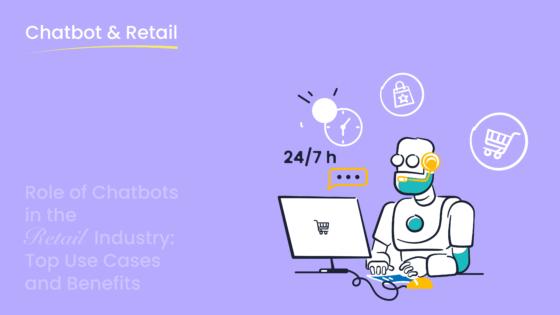
Imagine a world where you never have to wait hours for customer support or abandon your shopping cart due to unanswered questions. AI chatbots are turning this vision into reality. These intelligent tools are revolutionizing e-commerce by solving up to 70% of customer inquiries instantly and saving businesses billions annually. With chatbot transactions expected to hit $112 billion by 2025, it’s clear they’re not just a trend—they’re the future. Solutions like Sobot’s chatbot for ecommerce go further, offering 24/7 multilingual support that boosts conversions and reduces costs. As global e-commerce sales climb toward $7.4 trillion, adopting AI-driven tools like Sobot ensures you stay ahead in delivering seamless shopping experiences.
The Current Role of E-commerce Chatbots

Capabilities of Modern Chatbots for E-commerce
E-commerce chatbots have evolved far beyond simple question-and-answer tools. Today, they’re your virtual sales assistants, customer service agents, and even marketing strategists. These AI-powered tools can handle everything from answering FAQs to recommending products based on browsing history. They’re multilingual, available 24/7, and capable of managing high volumes of inquiries without breaking a sweat.

For instance, Sobot’s AI chatbot doesn’t just respond to customer queries. It proactively engages with users, offering personalized recommendations and guiding them through their shopping journey. Its no-coding-required setup makes it easy for businesses to deploy, while its multilingual capabilities ensure you can connect with customers worldwide.
The impact of these chatbots is undeniable. Take a look at how some brands have benefited:
| Brand | Impact on Business Performance |
|---|---|
| Sephora | 11% increase in booking rates for makeover appointments |
| Domino’s Pizza | 50% increase in digital orders via the chatbot |
| Bank of America | 10 million users attracted by virtual assistant, Erica |
| H&M | 70% engagement rate and 13% increase in app usage time |
| Marriott International | 44% increase in direct bookings with ChatBotlr integration |
| Lyft | 25% increase in ride requests through Facebook Messenger |
| Whole Foods | 12% growth in online grocery orders due to recipe assistant |
| Cdiscount | 24% conversion rate after conversations with generative AI |
| Vanden Borre | 80% customer satisfaction score |
These examples show how e-commerce chatbots are transforming businesses by boosting engagement, increasing conversions, and enhancing customer satisfaction.
Enhancing Customer Experience with AI Chatbots
Imagine walking into a store where the salesperson knows exactly what you’re looking for and offers personalized suggestions. That’s the kind of experience AI chatbots bring to ecommerce. They use artificial intelligence to analyze customer behavior, preferences, and purchase history, delivering tailored recommendations and support.
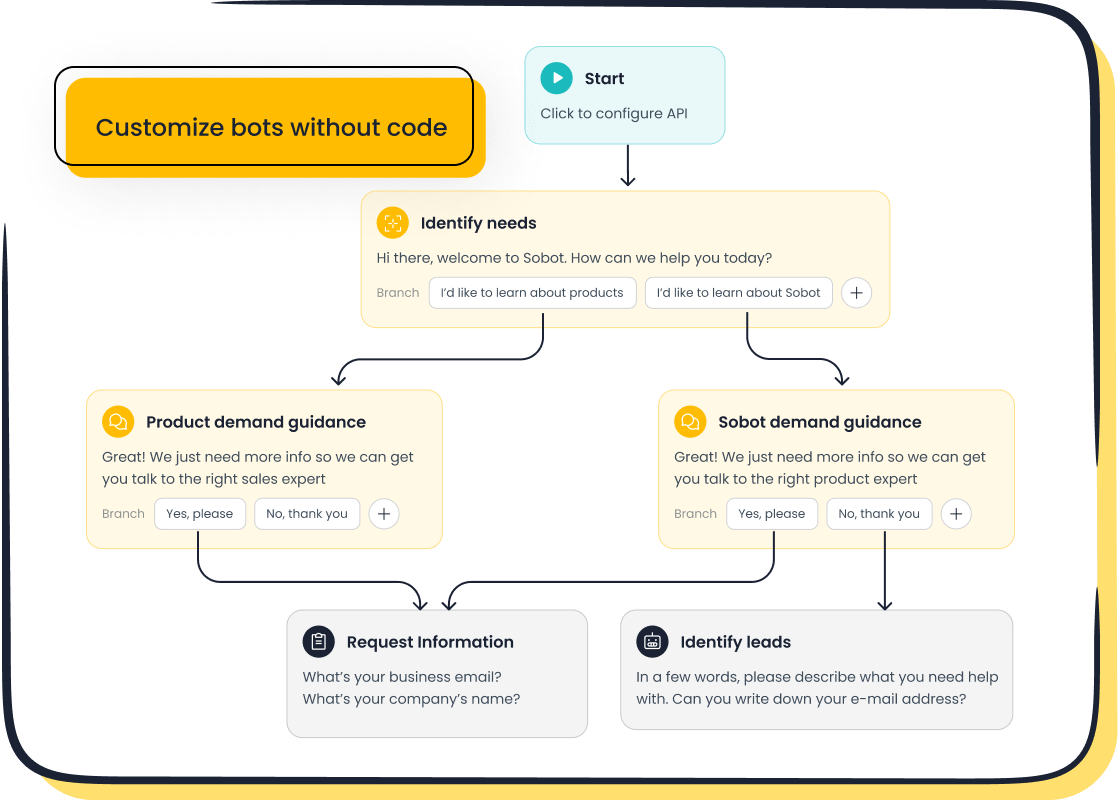
Sobot’s chatbot, for example, excels in this area. It uses AI-driven personalization to predict customer needs and provide real-time assistance. Whether it’s helping a shopper find the perfect product or resolving an issue instantly, the chatbot ensures a seamless experience. This level of service not only improves customer satisfaction but also encourages repeat purchases.
Recent studies highlight the efficiency of modern chatbots in improving customer experience:
| Metric | Improvement Percentage |
|---|---|
| Increase in average order value | 45% |
| Reduction in first-response time | 60% |
| Decrease in support ticket volume | 40% |
| Improvement in first-contact resolution | 35% |
| Increase in conversion rates | 35% |
| Reduction in customer service response times | 40% |
| Improvement in overall customer satisfaction scores | 25% |
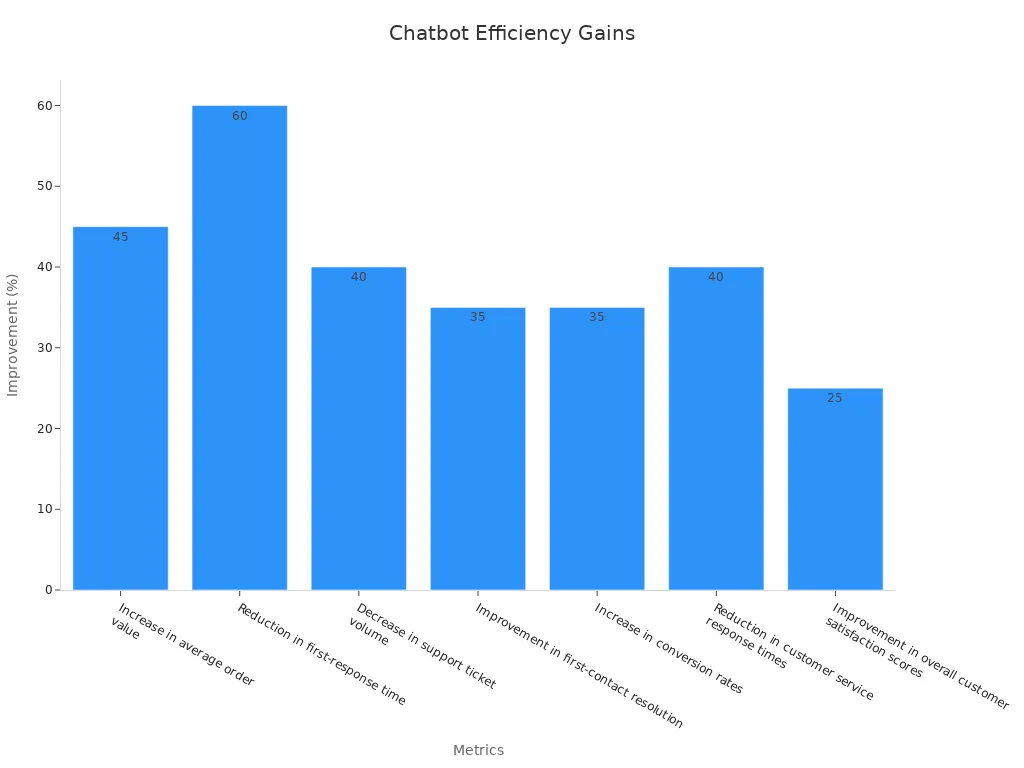
These numbers prove that AI chatbots are not just a convenience—they’re a necessity for delivering exceptional customer experiences in today’s competitive ecommerce landscape.
Real-World Examples of AI Chatbot Success Stories (e.g., OPPO and Sobot)
Real-world success stories show how e-commerce chatbots are reshaping the industry. Take OPPO, a global leader in smart devices. During peak shopping periods, OPPO faced a surge in customer inquiries. By implementing Sobot’s chatbot, they automated responses to repetitive queries, freeing up human agents for complex issues. This approach led to an 83% chatbot resolution rate and a 94% positive feedback score. Even better, OPPO saw a 57% increase in repurchase rates.
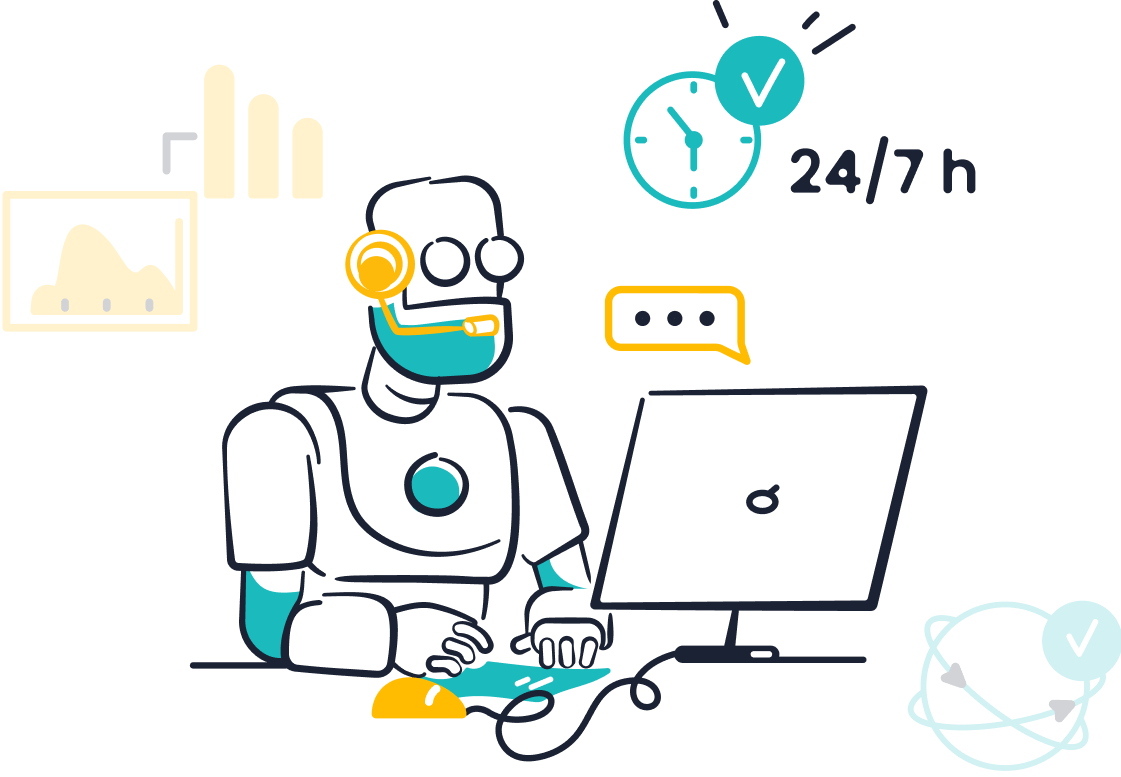
Sobot’s chatbot also helped OPPO optimize its knowledge base, reducing maintenance efforts by 90%. By integrating global customer channels, OPPO improved data accessibility and service quality. This case highlights how AI chatbots can drive efficiency, enhance customer satisfaction, and boost sales.
These success stories aren’t limited to OPPO. Across industries, businesses are leveraging chatbots to achieve remarkable results. Whether it’s increasing engagement, reducing costs, or improving operational efficiency, the potential of e-commerce chatbots is limitless.
Key Trends in E-commerce AI Chatbots for 2025
AI-Driven Personalization and Predictive Analytics
Imagine walking into a store where every product feels like it was handpicked just for you. That’s the magic of AI-driven personalization in e-commerce. By analyzing customer behavior and purchase history, AI chatbots can predict what shoppers want before they even know it themselves. This isn’t just about convenience—it’s about creating hyper-personalized experiences that keep customers coming back.
AI-powered predictive analytics takes this a step further. It forecasts future buying patterns, helping businesses optimize inventory and marketing strategies. For example, if a customer frequently buys skincare products, the chatbot might recommend a new moisturizer or alert them to an upcoming sale. This level of personalization doesn’t just improve engagement; it boosts conversion rates significantly.
Using AI to decipher vast quantities of customer data transforms numbers into actionable strategies. It’s about turning insights into results.
The numbers speak for themselves: AI-driven personalization enhances e-commerce conversion rates by tailoring product recommendations to individual preferences. As online retail grows to account for 24% of total retail sales by 2025, businesses that embrace data-driven personalization will lead the pack.
Conversational AI and Natural Language Processing Advancements
Have you ever chatted with a bot that felt almost human? That’s the power of conversational AI and natural language processing (NLP). These technologies enable chatbots to understand and respond to customer queries in a way that feels natural and intuitive. They don’t just answer questions—they hold conversations.
The advancements in NLP are staggering. Chatbots can now detect nuances in language, such as sarcasm or emotion, making interactions more meaningful. For instance, if a customer types, “I’m frustrated with my order,” the chatbot can respond empathetically and offer a solution. This human-like interaction builds trust and improves customer satisfaction.
Here’s a quick look at the growth of conversational AI:
| Statistic | Value | Year |
|---|---|---|
| Conversational AI market size | $4.2 billion | 2019 |
| Projected market size | $15.7 billion | 2024 |
| CAGR | 30.2% | 2019-2024 |
With businesses increasingly adopting conversational AI, especially in e-commerce, the future looks bright. Sobot’s AI chatbots, for example, leverage these advancements to deliver personalized customer journeys that feel less like transactions and more like conversations.
Voice and Visual Chatbots for Multimodal Interactions
The way we interact with technology is changing. Voice and visual chatbots are leading the charge, offering multimodal interactions that cater to diverse customer needs. Imagine asking a chatbot for product recommendations while uploading a photo of an item you’re looking for. Or using voice commands to place an order while driving. These scenarios are no longer futuristic—they’re happening now.
Voice assistants, in particular, are transforming e-commerce. Studies show they can increase sales by up to 20%, thanks to personalized recommendations and offers. Visual chatbots add another layer of convenience. For example, an online fashion retailer’s chatbot lets customers upload photos of outfits they like, then suggests similar items from their catalog. This approach not only improves customer satisfaction but also boosts average order values.
Retailers are already seeing the benefits:
- A global electronics retailer reduced resolution times by 40% and improved customer satisfaction by enabling customers to upload photos and describe issues in various formats.
- An online fashion retailer increased conversion rates by allowing customers to interact via voice and visual inputs.
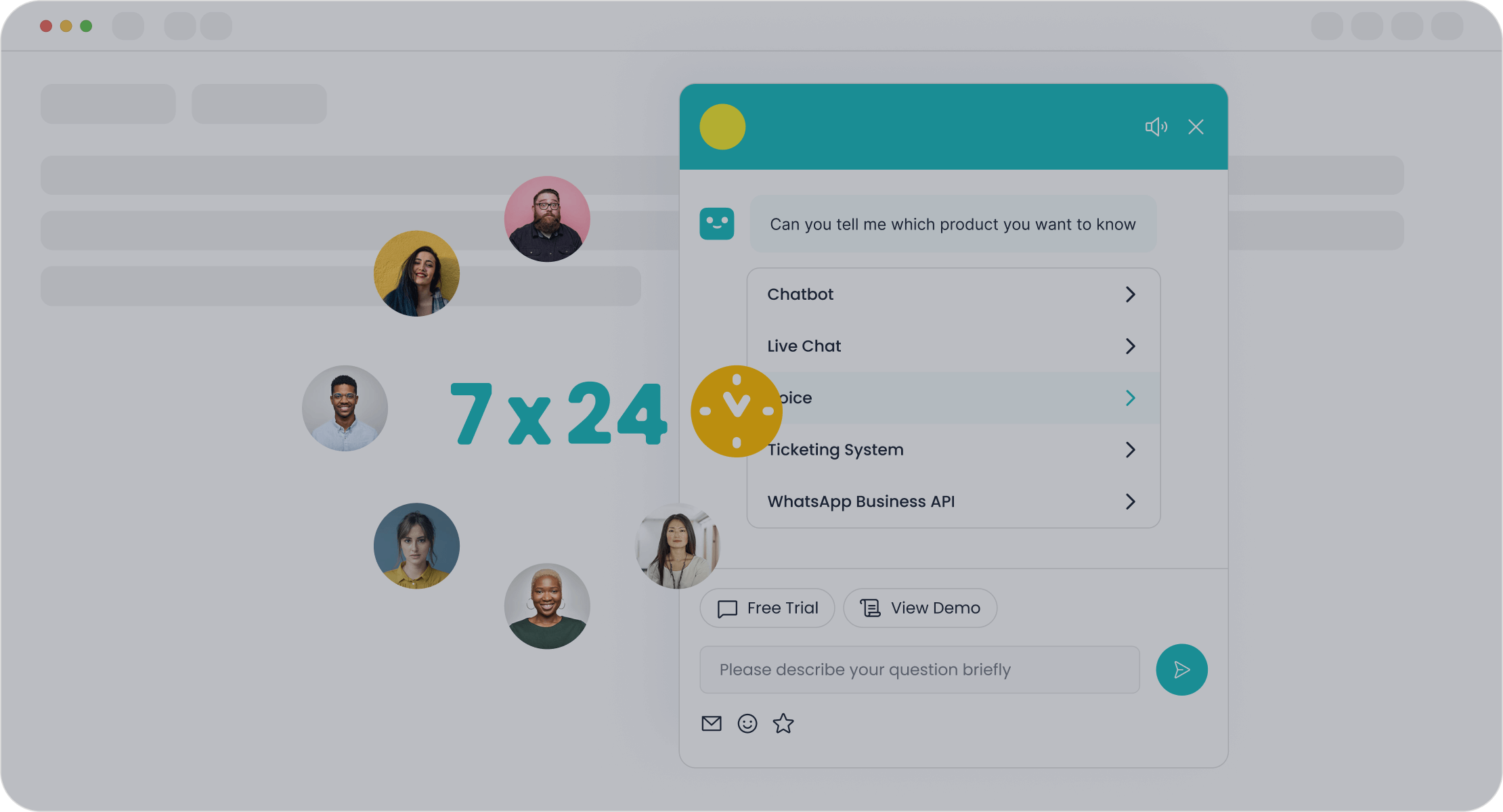
Sobot’s AI chatbot supports these multimodal interactions, making it easier for businesses to deliver seamless, engaging experiences. As mobile commerce grows to represent 44% of U.S. e-commerce sales by 2025, adopting voice and visual chatbots will be essential for staying competitive.
Integration with Emerging Technologies (AR, VR, IoT)
The future of ecommerce is being shaped by emerging trends like augmented reality (AR), virtual reality (VR), and the Internet of Things (IoT). These technologies are transforming how you shop online, making it more interactive and immersive. AI chatbots are playing a key role in this evolution by seamlessly integrating with these innovations.
Imagine browsing an online furniture store. With AR, you can visualize how a couch looks in your living room before buying it. Now, pair that with a chatbot that answers your questions about dimensions, materials, or delivery options in real time. This combination creates a shopping experience that feels almost like visiting a physical store.
VR takes it a step further. You could explore a virtual showroom, guided by an AI-powered assistant that suggests products based on your preferences. For example, a VR-enabled ecommerce platform might let you "walk" through a clothing store, try on outfits virtually, and get recommendations from a chatbot.
IoT is also changing the game. Smart devices like refrigerators can now track inventory and notify you when you're running low on groceries. An e-commerce chatbot integrated with IoT can suggest products, place orders, and even schedule deliveries—all without you lifting a finger.
Sobot’s AI chatbot is designed to work seamlessly with these technologies. Its omnichannel capabilities and advanced AI make it easy to integrate with AR, VR, and IoT platforms. Whether you're enhancing a virtual shopping experience or automating smart device interactions, Sobot ensures your customers enjoy a smooth and engaging journey.
Tip: Businesses that embrace these emerging trends early will gain a competitive edge in the rapidly evolving ecommerce landscape.
Omnichannel Support with AI Chatbots
In today’s ecommerce world, customers expect seamless support across multiple channels. Whether they’re shopping on your website, messaging you on WhatsApp, or browsing your app, they want consistent and instant assistance. This is where omnichannel support powered by AI chatbots becomes essential.
An omnichannel approach ensures that no matter where your customers reach out, they get the same high-quality experience. For instance, a customer might start a conversation on your website, continue it via email, and finish it on social media. With an AI chatbot like Sobot’s, all these interactions are unified into a single thread. This eliminates the frustration of repeating information and creates a smoother experience.
Here’s how omnichannel support benefits your business:
- Improved Customer Satisfaction: Customers get quick, consistent answers across all platforms.
- Increased Efficiency: AI chatbots handle repetitive queries, freeing up your team for complex issues.
- Higher Retention Rates: A seamless experience encourages customers to return.
Sobot’s chatbot excels in omnichannel support. It integrates with platforms like WhatsApp, SMS, and social media, ensuring you’re always available where your customers are. Its multilingual capabilities mean you can connect with a global audience effortlessly. Plus, its AI-driven insights help you optimize interactions, boosting both engagement and conversions.
Did you know? Businesses with strong omnichannel strategies retain 89% of their customers, compared to just 33% for those with weak strategies (source).
By adopting omnichannel AI chatbots, you’re not just meeting customer expectations—you’re exceeding them.
Benefits of Adopting AI Chatbots in E-commerce
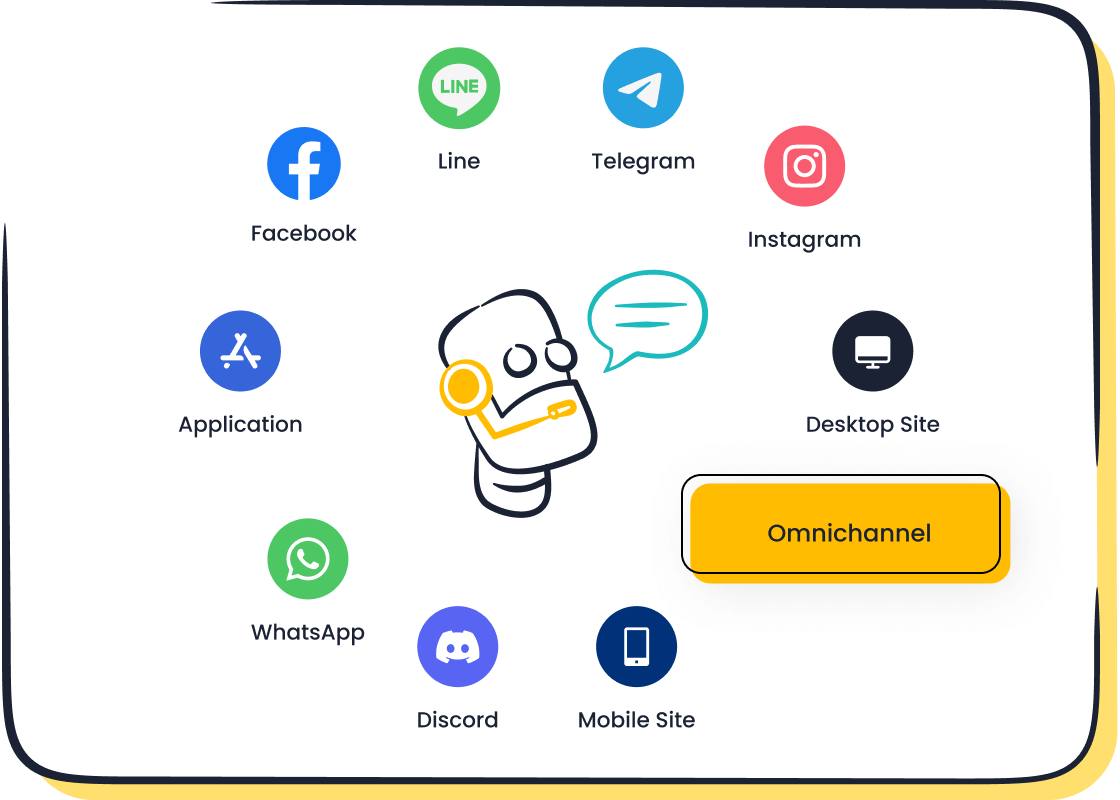
Improved Customer Engagement and Retention
AI chatbots are transforming how you connect with customers. They don’t just answer questions—they create meaningful interactions that keep shoppers engaged. By offering 24/7 support, chatbots ensure your customers always get the help they need, whether it’s midnight or midday. This constant availability boosts satisfaction and builds loyalty.
Personalization plays a big role here. Chatbots analyze customer behavior to deliver tailored experiences, like personalized recommendations based on browsing history. Imagine a shopper looking for skincare products. The chatbot might suggest a moisturizer that complements their previous purchase. This level of attention makes customers feel valued and encourages repeat visits.
The numbers back this up:
- 15% increase in conversion rates shows how chatbots turn browsers into buyers.
- 30% reduction in support costs highlights their efficiency.
- Metrics like user retention rate and click-through rate prove chatbots enhance engagement.
Sobot’s AI chatbot excels in creating these connections. Its multilingual capabilities and proactive messaging ensure every customer feels heard, no matter where they’re from.
Operational Efficiency and Cost Savings
Running an e-commerce business can be expensive, especially when managing customer inquiries. AI chatbots simplify this by handling up to 80% of routine questions, freeing your team to focus on complex issues. This reduces costs and improves efficiency.
Take a look at the impact:
| Company | Metric/Outcome | Cost Savings/Improvement |
|---|---|---|
| Vodafone | 70% reduction in cost-per-chat | Costs less than one-third of live chat |
| Alibaba | Handles 75% of online queries | Saves ~$150 million annually |
| Klarna | On par with human agents in customer satisfaction | 25% drop in repeat inquiries |

Sobot’s chatbot offers similar benefits. It operates 24/7, saving up to 50% on agent costs while improving productivity by 70%. Its no-coding setup makes deployment easy, so you can start saving time and money right away.
Competitive Edge in a Dynamic Market
E-commerce is evolving fast, and staying ahead means delivering exceptional customer experiences. AI chatbots give you the edge by offering personalized assistance, faster response times, and seamless omnichannel support.
Here’s why they matter:
- 24/7 customer care reduces waiting times and improves satisfaction.
- Personalized interactions build trust and loyalty.
- AI-driven insights optimize pricing strategies and streamline operations.
Sobot’s chatbot helps you stand out. Its ability to integrate with emerging technologies like AR and IoT ensures you’re ready for the future. Whether it’s guiding customers through virtual showrooms or automating smart device interactions, Sobot’s solutions keep you ahead in a competitive market.
Tip: Adopting AI chatbots early positions your business as a leader in delivering innovative customer experiences.
Scalability for Growing E-commerce Businesses
Scaling your ecommerce business can feel like a daunting task. As your customer base grows, so do the challenges of managing inquiries, maintaining quality service, and keeping operations efficient. This is where e-commerce chatbots step in to make life easier. They’re not just tools—they’re your secret weapon for handling growth without breaking a sweat.
Imagine this: You’re running a mid-sized online store, and suddenly, your sales skyrocket during a holiday season. Instead of scrambling to hire more agents, you deploy an AI chatbot like Sobot’s. It handles thousands of customer queries simultaneously, resolving up to 83% of them instantly. This frees your team to focus on complex issues while ensuring every shopper gets quick, accurate responses.
Chatbots also adapt to your needs. Whether you’re expanding into new markets or launching a new product line, they scale effortlessly. Sobot’s chatbot, for example, supports multiple languages and integrates with platforms like WhatsApp and SMS. This means you can connect with customers worldwide, no matter how fast your business grows.
Here’s the best part: scalability doesn’t mean sacrificing personalization. AI chatbots analyze customer data to deliver tailored experiences, even at scale. They recommend products, answer questions, and guide shoppers through their journey—all while maintaining the human touch. This level of customer engagement keeps your buyers happy and loyal.
Businesses that embrace chatbot adoption early often see significant benefits. Studies show that companies using e-commerce chatbots reduce operational costs by up to 50% while boosting productivity by 70%. With ecommerce sales projected to hit $7.4 trillion by 2025, scaling efficiently is key to staying competitive in the future.
Tip: Don’t wait until your business feels overwhelmed. Start integrating AI chatbots now to prepare for growth and ensure a seamless experience for your customers.
Challenges and Considerations for AI Chatbot Implementation
Addressing Ethical Concerns and Bias in AI
AI chatbots are powerful tools, but they come with ethical challenges. One major concern is bias. If the chatbot’s training data isn’t diverse, it can unintentionally reproduce societal biases. For example, product recommendations might favor certain demographics over others, leading to unfair experiences. To avoid this, businesses need to use diverse datasets and ensure inclusivity in their AI systems.
Transparency is another critical factor. Customers want to know how their data is being used. Regulations like GDPR and CCPA emphasize the importance of user consent and data protection. By adhering to these standards, you can build trust and ensure ethical AI practices.
| Source | Key Points |
|---|---|
| Building Trust in the AI Era | Adherence to GDPR and CCPA is crucial for data privacy in chatbot systems. |
| Ethical Considerations of AI | Inclusivity and fairness are essential for e-commerce product recommendations. |
| Generative Chatbots in Education | Biased training data risks reproducing societal biases. |
When implementing e-commerce chatbots, focus on fairness, transparency, and inclusivity. These principles ensure your chatbot delivers ethical and unbiased customer experiences.
Ensuring Data Privacy and Security
Data privacy is a top concern for customers interacting with AI chatbots. Many worry about how their information is collected, stored, and used. To address these concerns, you need robust safeguards. This includes encryption, secure backups, and compliance with legal standards.
Common challenges in data privacy include:
- Data collection practices
- Transparency in data usage
- Security vulnerabilities
- Legal compliance requirements
For industries like healthcare, where sensitive data is involved, the stakes are even higher. Studies show that healthcare institutions must prioritize secure data management as chatbot adoption grows. By implementing strong privacy measures, you can protect customer trust and avoid legal risks.
Sobot’s AI chatbot excels in this area. It offers GDPR-compliant solutions with encrypted backups and secure data handling. These features ensure your customers’ information stays safe while delivering seamless customer support automation.
Balancing Automation with Human Interaction
Automation is great for efficiency, but customers still value human interaction. Research shows that 72% of consumers prefer AI-powered interactions if they can escalate to a human agent when needed. This balance is key to delivering exceptional customer service.
Here’s how businesses are achieving it:
- Integrating AI with human agents to create experience centers.
- Designing intuitive AI systems that handle routine tasks while escalating complex issues to humans.
Sobot’s chatbot strikes this balance perfectly. It automates repetitive queries, freeing your team to focus on high-value interactions. Its intuitive design ensures customers feel supported, whether they’re chatting with the bot or a human agent.
By combining automation with human touch, you can enhance customer satisfaction and build lasting relationships.
Seamless Integration with Existing Systems
Integrating e-commerce chatbots into your existing systems might sound complicated, but it doesn’t have to be. Modern AI chatbots, like Sobot’s, are designed to work seamlessly with the tools you already use. Whether it’s your CRM, inventory management software, or customer communication platforms, these chatbots fit right in without disrupting your operations.
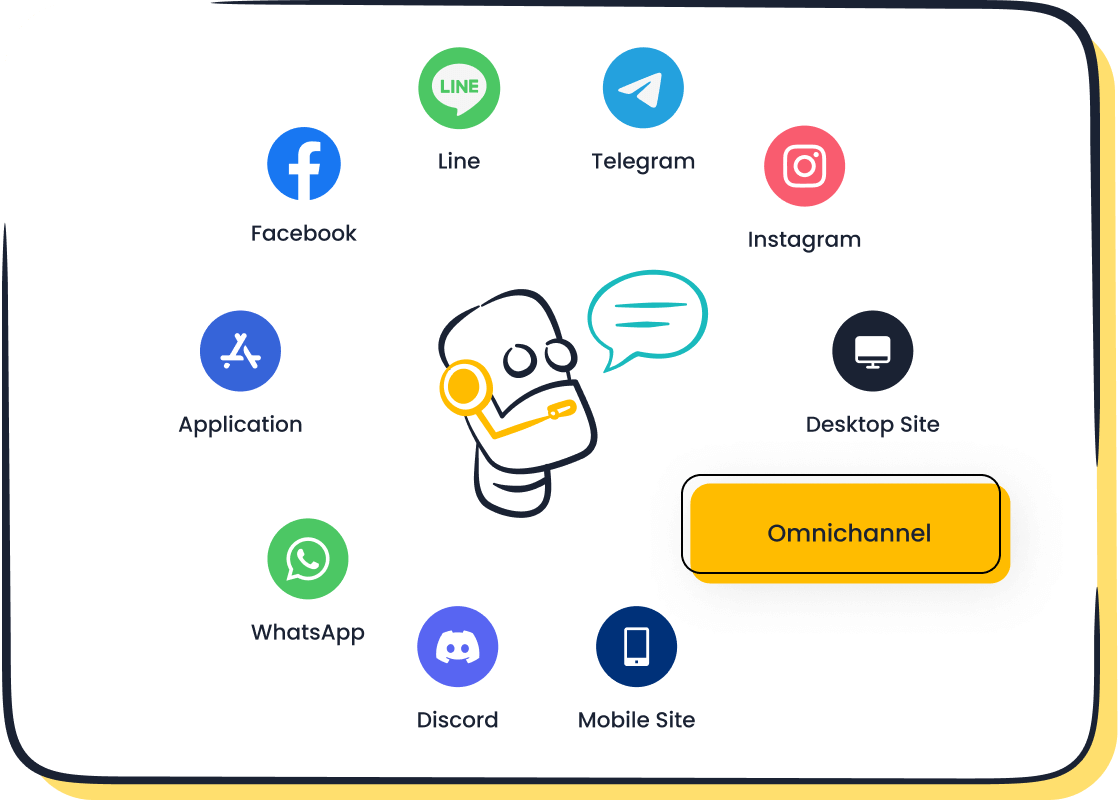
Let’s break it down. Imagine you’re running an online store with multiple sales channels—your website, social media, and even messaging apps like WhatsApp. An AI chatbot can unify all these touchpoints, ensuring every customer interaction is tracked and managed in one place. This means no more juggling between platforms or losing track of conversations. Sobot’s chatbot, for example, integrates effortlessly with platforms like WhatsApp and SMS, giving you a centralized hub for customer support.
The benefits of seamless integration go beyond convenience. It directly impacts your business performance. Here’s a quick look at some key metrics that show how well chatbots integrate with existing systems:
| Metric | Description |
|---|---|
| Response speed | Average reaction time under 2 seconds |
| Resolution rate | At least 80% of inquiries answered directly |
| Handover quality | Precise transfer to staff for complex questions |
| Customer satisfaction | Regular user ratings |
| Success rate | Proportion of customer inquiries resolved successfully |
| Conversion | Increase in completion rates through chatbot support |
These numbers highlight how e-commerce chatbots improve efficiency and customer satisfaction. For instance, faster response times and higher resolution rates mean your customers get the help they need without delays. Plus, better handover quality ensures complex issues are handled by the right team members.
Sobot’s chatbot takes integration a step further by offering a no-coding-required setup. This makes it easy for you to connect the chatbot to your existing systems, even if you’re not tech-savvy. It also provides detailed reporting, so you can monitor performance and make data-driven improvements.
Tip: Start small by integrating your chatbot with one system, like your CRM. Once you see the benefits, expand to other tools for a fully connected experience.
Seamless integration isn’t just about making your life easier—it’s about preparing your business for the future. As e-commerce continues to evolve, having a unified system powered by AI chatbots will keep you ahead of the competition.
Strategic Recommendations for Businesses
Steps to Successfully Implement a Chatbot for E-commerce
Implementing an e-commerce chatbot doesn’t have to be overwhelming. By following a few clear steps, you can set yourself up for success.
- Define Your Goals: Start by identifying what you want the chatbot to achieve. Is it reducing response times, increasing conversions, or improving customer satisfaction? Clear goals will guide your setup.
- Choose the Right Platform: Look for a solution that aligns with your needs. For example, Sobot’s chatbot offers omnichannel support and a no-coding-required setup, making it easy to integrate into your existing systems.
- Build a Knowledge Base: Equip your chatbot with the right information. Use FAQs, product details, and common customer queries to create a robust knowledge base.
- Test and Train: Before going live, test the chatbot in real-world scenarios. Train it to handle various customer interactions, ensuring it delivers accurate and helpful responses.
- Monitor and Optimize: Once live, track its performance. Use metrics like resolution rates and customer feedback to identify areas for improvement.
By taking these steps, you’ll create a chatbot that enhances digital customer interactions and supports your business goals.
Best Practices for Optimizing AI Chatbots
To get the most out of your e-commerce AI chatbot, optimization is key. Here are some best practices to keep in mind:
- Personalize Interactions: Use customer data to tailor responses. For instance, recommend products based on browsing history or past purchases.
- Keep Conversations Natural: Leverage conversational AI to make interactions feel human. Customers appreciate bots that understand context and tone.
- Track Key Metrics: Regularly monitor performance indicators like user retention, bounce rate, and dwell time. These metrics reveal how well your chatbot engages users.
| Metric | Description | Importance |
|---|---|---|
| User Retention | Measures the number of users returning to the chatbot. | Indicates the effectiveness of the chatbot in fostering repeat usage. |
| Bounce Rate | Tracks how many users leave the site after interacting with the chatbot. | Helps assess the chatbot's impact on user engagement and site retention. |
| Dwell Time | Measures how long users stay on the site due to chatbot interaction. | Longer dwell time can enhance SEO and user experience. |
| Leads Captured | Counts the number of users providing contact information. | Essential for evaluating the chatbot's effectiveness in lead generation. |
Sobot’s chatbot excels in these areas, offering advanced reporting tools to help you optimize performance. By following these best practices, you’ll ensure your chatbot delivers maximum value.
Measuring ROI and Continuous Improvement
Measuring the ROI of your e-commerce chatbot is essential for understanding its impact. Start by tracking key areas like cost savings, revenue impact, and customer service performance.
| Tracking Area | Key Metrics | Measurement Frequency |
|---|---|---|
| Cost Savings | Labor hours saved, reduced expenses | Monthly |
| Revenue Impact | Sales conversions, average order value | Weekly |
| Customer Service | Resolution rates, response times | Daily |
| Overall ROI | Full cost-benefit analysis | Quarterly |
For example, a company investing $30,000 in a chatbot could see annual benefits of $90,000, achieving an ROI of 200%. That’s $2 earned for every $1 spent.
To continuously improve, focus on customer feedback. Metrics like CSAT (Customer Satisfaction Score) and NPS (Net Promoter Score) provide valuable insights. Sobot’s AI chatbot for customer service includes tools to measure these metrics, helping you refine your strategy over time.
Pro Tip: Regularly update your chatbot’s knowledge base and train it on new scenarios. This keeps it relevant and effective as your business evolves.
Partnering with Trusted Providers like Sobot
Choosing the right partner for your e-commerce chatbots can make or break your customer experience. With so many options out there, how do you pick the best one? You need a provider that’s reliable, innovative, and understands your business needs. That’s where Sobot comes in.
Sobot isn’t just another chatbot provider. It’s a trusted partner for over 10,000 brands worldwide, including big names like OPPO, Samsung, and Michael Kors. These companies rely on Sobot to deliver seamless customer interactions across multiple channels. Whether it’s answering FAQs, recommending products, or resolving issues, Sobot’s e-commerce chatbots handle it all with ease.
What sets Sobot apart? First, its AI-powered chatbots are multilingual and available 24/7. This means your customers get instant support, no matter where they are or what time it is. Second, Sobot’s solutions are easy to implement. You don’t need coding skills to set up its chatbot. The point-and-click interface makes deployment a breeze.
Sobot also helps you stay ahead of the curve. Its chatbots integrate with emerging technologies like AR and IoT, preparing your business for the future of e-commerce. Imagine a chatbot that not only answers questions but also works with smart devices to automate tasks. That’s the kind of innovation Sobot brings to the table.
Partnering with Sobot means more than just adopting a chatbot. It’s about building a long-term strategy for success. With Sobot, you’re not just meeting customer expectations—you’re exceeding them.
Pro Tip: Ready to transform your customer experience? Explore Sobot’s e-commerce chatbot solutions today at Sobot.io.
AI chatbots are revolutionizing e-commerce, offering unmatched efficiency and personalization. They boost customer satisfaction, cut costs, and drive loyalty. For instance, businesses using chatbots report a 15% rise in satisfaction and a 20% drop in support costs.
| Insight | Statistic |
|---|---|
| Increase in customer satisfaction | 15% |
| Reduction in customer support costs | 20% |
| Increase in conversion rate | 10% |
| Increase in customer loyalty | 10% |
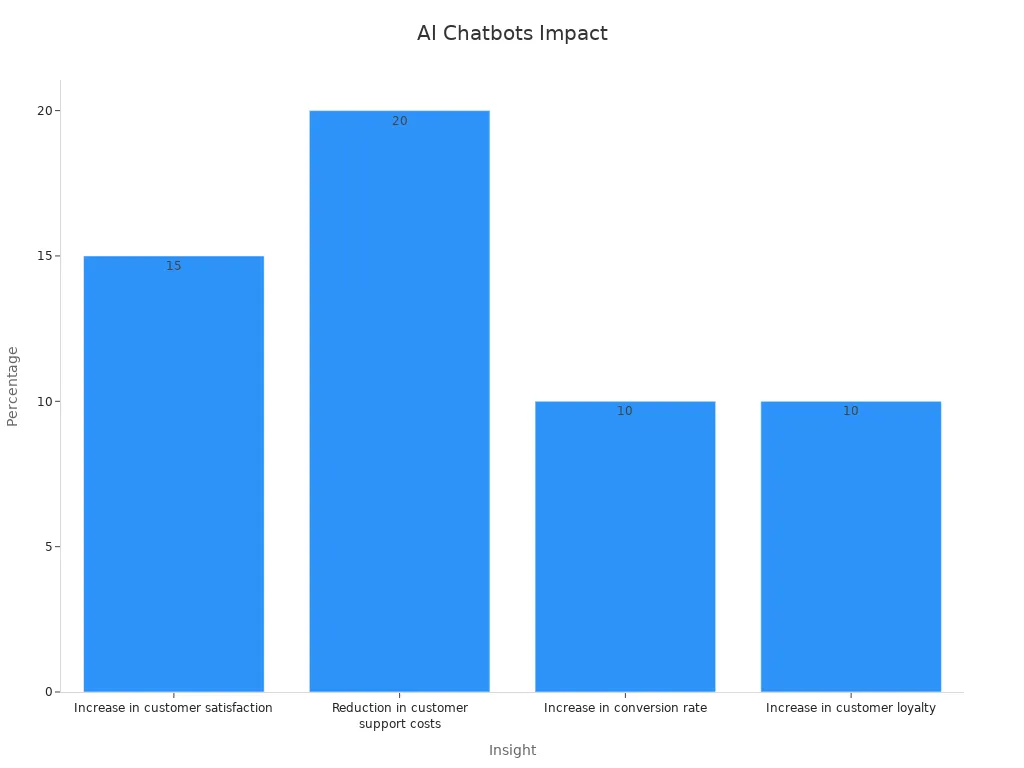
To stay competitive and embrace future trends, adopting Sobot’s AI chatbot is a smart move. Its 24/7 multilingual support and seamless integration ensure your business thrives. Start transforming your customer experience today with Sobot’s innovative solutions.
FAQ
What is an AI chatbot, and how does it work?
An AI chatbot is a virtual assistant that uses artificial intelligence to interact with users. It understands questions, provides answers, and performs tasks like recommending products. For example, Sobot’s chatbot uses AI to analyze customer behavior and offer personalized support, making shopping faster and easier.
How can AI chatbots improve my e-commerce business?
AI chatbots boost efficiency by handling up to 80% of routine queries. They’re available 24/7, reducing response times and improving customer satisfaction. Sobot’s chatbot, for instance, increases productivity by 70% and saves up to 50% on agent costs, helping you scale your business effortlessly.
Are AI chatbots difficult to set up?
Not at all! Many modern chatbots, like Sobot’s, require no coding. You can use a simple point-and-click interface to design workflows and deploy them quickly. This makes it easy for businesses of all sizes to start using AI chatbots without technical expertise.
Can AI chatbots handle multiple languages?
Yes, most advanced chatbots, including Sobot’s, are multilingual. They can communicate in several languages, allowing you to connect with customers worldwide. This feature is especially useful for global e-commerce businesses looking to expand their reach and improve customer satisfaction.
How do I measure the success of my AI chatbot?
Track metrics like resolution rates, customer satisfaction scores (CSAT), and conversion rates. For example, Sobot’s chatbot achieves an 83% resolution rate and a 94% positive feedback score. These numbers show how well your chatbot is performing and where you can improve.
Tip: Regularly update your chatbot’s knowledge base to keep it relevant and effective.
See Also
Enhancing Customer Satisfaction Through E-commerce Chatbots
Increasing Sales With E-commerce Live Chat Solutions
Best Live Chat Tools for E-commerce This Year
